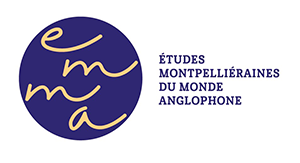



|
Call for Papers BOOK OF NATURE, NATURE OF BOOKS: PRACTICES OF FEMALE BOTANISTS Keynote speakers: Anne Hodge (Curator of drawings and prints, National Gallery of Ireland) Valérie Chansigaud(Historian of Science, Independentscholar and author)
The research centres TIL (Université de Bourgogne) and EMMA (Université Paul-Valéry Montpellier 3) are organizing a bilingual (French-English) international interdisciplinary conference on the role of women in the development of botany as part of visual, manuscript and print cultures, from the Middle Ages to the contemporary period. We propose to foster discussions at the intersections of the history of natural sciences, print culture, book history, illustration studies, gender studies, plant studies and ecocriticism. Papers may focus on a wide variety of case studies pertaining to any geographical area, from herbals to non-fiction writing, from publishers’ and libraries’ archives to museum collections, or from the garden to the diary and to the printed book. They will address the role of women as amateur or professional botanists, gardeners, members of clubs, illustrators, diarists, writers, publishers, and in any other capacity where their individual practices bear on forms of manuscript and print artefacts. Historically, a putative association between women and plants shaped the views on both (Greene; Taiz and Taiz). Even after the discovery of sexuality in plants in the late seventeenth century, the idea remained so prevalent that Hegel wrote in his Philosophy of Right (1821) that men were “like animals, active and combative,” and women “like plants, essentially placid” (Schiebinger 2). It was probably for this reason that Jean-Jacques Rousseau, among many others, recommended botany to ladies. By the early nineteenth century, botany was viewed as a feminine science, and a distinction was emerging between scientific botany, for men, and popular, literary botany, for women (Shteir). The conference aims to explore the way the spaces and boundaries of women’s contributions to botany were redefined in the face of institutional and societal conventions and restrictions. Along with histories of suppression, we will also examine the way women gained prominence in certain fields, such as illustration and shaped aspects of manuscript and print cultures. Specific case studies as well as papers looking at long-term processes will shed light on past and contemporary trends so as to assess legacies and propose revaluations. We invite academics and young scholars, librarians, visual artists and publishers to contribute papers exploring the following themes: - The Book of nature and its legacy: we would welcome papers on the legacy of the medieval trope of nature legible as a book, materialized from the 12th century by such productions as herbals. This theme could include issues around the vexed notion of “nature” when it collides with “the feminine” and if/how practices can be seen as gendered in the domain of botany. - Itineraries of women and plants: the papers may include biographical accounts that trace the itineraries of female botanists in relation to the type of plants that they study. It may be fruitful to underline the implicit or explicit hierarchies that underscore gender divisions: is there a link between unobtrusive species such as moss, fungus and ferns, and their being studied by women? We will also examine the usual association between women and care, as for instance in relation to medicinal plants. - Records, archives and exchanges: we would like to hear about the way researchers can gain access to the role of female botanists. How much of their work has been recorded, compared to their male counterparts, and how are such records organized and archived? We also welcome contributions that explore institutional funding of research and travel, as well as traces of transnational networks and discussions with domestic and foreign correspondents. Can we imagine unknown treasures still waiting to be discovered? - Circulation of manuscript and print artefacts: the papers may examine the specific ways for women to circulate their findings. This may bear on the history of publishing: how have publishers approached the female botanist? What is the role of women working as publishers themselves, or as popularizers of botany and educationalists in print? The connection between print and manuscripts may also lead us to address the interplay between restriction, emancipation and creativity, in such instances as the diary, the private circulation of manuscripts and private archives. - Spaces of practice and display: attention will also be paid to the spatial and medial dimension of the circulation of manuscript and print artefacts, from the page of the book, periodical and diary to museums, drawing rooms, gardens, lecture theatres, gendered spaces, all the way to the Internet today. This provides an opportunity to assess the alternative function of certain spaces such asthe garden and domestic spaces when they are redefined as botanical laboratories. Space may also provide clues to how women have been confined by their social backgrounds or have moved across social boundaries. - Botany, illustration and nature writing: working as illustrators often allowed women artists to engage in scientific pursuits whilst being deprived of institutional support.This limitation may havenevertheless been a way of consolidating iconic and textual models and modes of inquiry that found their way in the illustrated book, in nature writing, and in theoretical and popular views of plants’ lives. Therefore, we also invite papers that explore how the material conditions of textual and visual practices, as well as attitudes to plants have been tropedinto a “botanical poetics” (Rosenberg 10-14). We would also like to know how contemporary illustrators, botanists and nature writers come to terms with such legacies. - Amateur and professional science: the papers may focus on the way fully recognized or overlooked women negotiated the boundary between private and public spheres, how they construed the porosity between certain fields, and which educational spaces they had access to. This could lead to investigations of women’s contribution to the development of botany as an individual and/or institutional pursuit, as an intimate source of personal development as opposed to a professional career, and of course to assessments of overlooked contributions to the history of science. - Female crafting and the intermedial circulation of models: we welcome contributions that highlight the material, technical and intermedial aspects of women’s practices. Are there specific experimental productions such as Mary Delany’s paper mosaics and Anna Atkins’s cyanotypes that lend themselves to a critical analysis of their marginal status and alternative visualizations of nature? Certain types of material objects have been associated to botanical practices and the intermedial dissemination of models, as, for instance, the models of flowers made by the Brendel firm in Germany, still preserved in European universities such as Dijon. What was the role of women in the manufacturing of these models? What was their impact on the careers and aesthetics of female botanists? Please send a 300-word abstract and a biobibliography (in English or French) before 31st October 2024 to the following address: bookofnature2025@gmail.com Notification: 15th December 2024. The program will be finalized in January 2025. After the conference, deadline for the submission of papers for publication: 30th September 2025. Scientific committee: Dr Marie-Charlotte Anstett(CNRS, Université de Bourgogne);Dr Anna Cabanel (KU Leuven); Dr Kathleen Davidson (University of Sydney); Rodolphe Leroy (Université de Bourgogne);Dr Katherine Manthorne (City University of New York);Dr Clélia Nau (University Paris-Cité);Dr Ann Shteir (York University, Canada). Organizing committee: Sophie Aymes, Marie-Odile Bernez, Ali Hatapçı, Candice Lemaire (Université de Bourgogne), Valérie Morisson (Université Paul-Valéry Montpellier 3).
Bibliographie indicative Bending, Stephen. Green Retreats: Women, Gardens and Eighteenth-Century Culture. Cambridge : Cambridge UP, 2013. Chansigaud, Valérie. Histoire de l’illustration naturaliste. Paris: Delachaux et Niestlé, 2009. —. Une histoire des fleurs: entre nature et culture. Paris: Delachaux et Niestlé, 2014. Davis, Rebecca. “The Book of Nature”.Nature and Literary Studies. Ed. Peter Remien and Scott Slovic. Cambridge: Cambridge UP, 2022. 31-48. George, Sam. Botany, Sexuality, and Women’s Writing 1760-1830: From Modest Shoot to Forward Plant. Manchester: Manchester UP, 2007. Greene, Edward Lee. Landmarks of Botanical History. Part 2. Ed. Frank N. Egerton. Stanford UP, 1983. Johnson, Nuala C. Empire, Gender, and Bio-Geography: Charlotte Wheeler-Cuffe and Colonial Burma. Abingdon; New York : Routledge, 2023. LaBouff, Nicole. “Public Science in the Private Garden: Noblewomen Horticulturalists and the Making of British Botany c. 1785–1810”. History of Science 59:3 (Sept. 2021): 223-55. Laroche, Rebecca. Medical Authority and Englishwomen’s Herbal Texts, 1550–1650. London: Routledge, 2016. Libster, Martha. Herbal Diplomats: The Contribution of Early American Nurses (1830-1860) to Nineteenth-Century Health Care Reform and the Botanical Medical Movement. Golden Apple Publications, 2004. Lightman, Bernard (ed.). A Companion to the History of Science. Chichester; Malden: John Wiley & sons, 2016. Manthorne, Katherine. Fidelia Bridges. Nature into Art. Lund Humphries, 2023. Page, Judith W., and Elise Lawton Smith. Women, Literature, and the Domesticated Landscape: England’s Disciples of Flora, 1780-1870. Cambridge: Cambridge UP, 2011. Rosenberg, Jessica. Botanical Poetics: Early Modern Plant Books and the Husbandry of Print. Philadelphia: U of Pennsylvania P, 2022. Rudolph, Emanuel D. “Women in Nineteenth Century American Botany: A Generally Unrecognized Constituency”.American Journal of Botany 69:8 (1982): 1346-1355. Sagal, Anna K. Botanical Entanglements: Women, Natural Science, and the Arts in Eighteenth-Century England. Charlottesville: U of Virginia P, 2022. Schiebinger, Londa L. Nature’s Body: Gender in the Making of Modern Science. Rutgers: Rutgers UP, 2004. Shteir, Ann B. Cultivating Women, Cultivating Science: Flora’s Daughters and Botany in England, 1760 to 1860. Baltimore: Johns Hopkins UP, 1996. Strocchia, Sharon T. Forgotten Healers: Women and the Pursuit of Health in Late Renaissance Italy. Cambridge (Mass.): Harvard UP, 2019. Taiz, Lincoln and Lee Taiz. Flora Unveiled: The Discovery and Denial of Sex in Plants. Oxford: Oxford UP, 2017. |

